Nepali Tea: Benefits & Steeping Guide
Guide to Nepali Tea: Health Benefits & Perfect Steeping
Nepali tea from Nepal’s Ilam region is shaped by high-altitude terroir—cool nights and slow growth concentrate aroma, polyphenols, and natural sweetness. Use this guide for the key health benefits and the exact steeping times for black, oolong, green, and white so you enjoy a perfect cup every time.
Want the full story on styles, benefits & brewing? Read our Ultimate Guide to Nepali Tea.

Why Ilam’s High Altitude Matters
- Cool nights, slow growth: concentrates aromatics & polyphenols for clarity in the cup.
- Clean mountain air: crisp, transparent flavor with less harsh bitterness.
- Small farms, careful plucking: handpicked leaves preserve quality and nuance.
Health Benefits of Nepal Tea
- Antioxidant support: tea polyphenols help counter everyday oxidative stress.
- Balanced energy: less caffeine than coffee + L-theanine for calm focus.
- Heart & circulation: polyphenols are associated with healthy vascular function.
- Metabolic support: especially with green teas paired with an active lifestyle.
- Skin wellness: antioxidants help defend against environmental stressors.
Note on caffeine: a brief rinse can reduce bitterness, but does not meaningfully lower caffeine. If sensitive, use less leaf or cooler water.
Curious how antioxidants and caffeine balance in oolong vs black? See Oolong Tea from Nepal — Benefits & Brewing.
Exact Steeping Guide (Nepal Tea)
For a stronger cup, increase leaf amount rather than over-steeping (which can cause bitterness).
| Tea Type | Leaf per 8 oz | Water Temp | Bitterness/ |
Time |
|---|---|---|---|---|
| Black | 1 tsp (2–3 g) | Boil, cool 1 min | Low–Moderate | 3–4 min |
| Oolong | 1 heaping tsp (3–4 g) | Boil, cool 2 min | Low–Moderate | 2–3 min |
| Green | 1 heaping tsp (3–4 g) | ~175°F | Low | 1–2 min |
| White | 2 tsp (2–3 g) | ~185°F | Low | 2–3 min |
Explore Nepali Black Teas → • Explore Nepali Oolong Teas → • Explore Nepali Green Teas → • Explore Nepali White Teas →
How Nepali Tea Is Made (Sustainable & Single-Origin)
- Harvest: tender buds & young leaves are handpicked.
- Wither → Roll → Oxidize: measured handling develops body & aroma.
- Dry & Sort: gentle drying locks flavor; grading ensures consistency.
- Pack Fresh: oxygen- and light-protected packaging preserves character.
Caffeine & Theanine: Balanced Energy
- Less caffeine than coffee for a gentler, longer-lasting lift.
- L-theanine synergy—many drinkers note calm, focused clarity.
- Brew control: if sensitive, use slightly cooler water and shorter times; adjust leaf amount before time.
Cold Brew Method (Ultra-Smooth)
- Use about 1 g tea per 12 g (ml) water (≈1:12).
- Combine in a jar, cover, and refrigerate 8–12 hours.
- Strain and serve over ice. Optional: a splash of sparkling water.
Cold brew shines with Nepali oolong and black—try Annapurna Amber Oolong or Himalayan Golden Black.
Nepali vs. Darjeeling vs. Assam (What’s Different?)
| Origin | Altitude | Flavor Profile | Bitterness/ |
Best For |
|---|---|---|---|---|
| Nepal (Ilam) | 4,000–8,000 ft | Honeyed malt, stone fruit, alpine florals | Low–Moderate (round finish) | Straight sipping; nuanced brews |
| Darjeeling | 3,000–7,000 ft | Muscatel, orchid, citrus peel | Low–Moderate (brisk) | First/second-flush connoisseurs |
| Assam | Sea level–1,500 ft | Bold malt, cocoa, molasses | Moderate–High (strong) | Breakfast blends; milk & sugar |
Quick Picks by Use-Case
- Smooth morning cup: Himalayan Golden Black
- All-day focus (lighter caffeine): Pokhara Classic Organic Green
- Aromatic complexity: Annapurna Amber Oolong
- Classic with milk: Sherpa Breakfast Black
Want a full overview before you choose? Read our Ultimate Guide to Nepali Tea.
Keep learning: Best Tea in Nepal • Oolong Tea from Nepal • Ultimate Guide to Nepali Tea
FAQs
Which Nepali black tea is best with milk?
Sherpa Breakfast is blended for milk and spice; simmer 5–6 minutes for a classic chiya-style cup.
How much caffeine is in Nepali tea?
Typical ranges per 8 oz: black/oolong ~20–60 mg, green ~15–40 mg, white ~10–35 mg. Coffee is often ~90–120 mg. Exact levels vary by leaf and brew strength.
Does rinsing the leaves remove caffeine?
No—short rinses mainly reduce bitterness and surface dust. To lower caffeine, brew a bit cooler/shorter, or choose naturally lighter-brewing styles and use less leaf.
What water temperature should I use for each tea?
Black ≈200°F (boil, cool 1 min); Oolong ≈195°F; Green ≈175°F; White ≈185°F. Use the steeping table above for leaf ratios and times.
How should I store Nepali tea for freshness?
Keep tea airtight and opaque, away from heat, light, and humidity. Avoid fridge/freezer after opening to prevent condensation.

